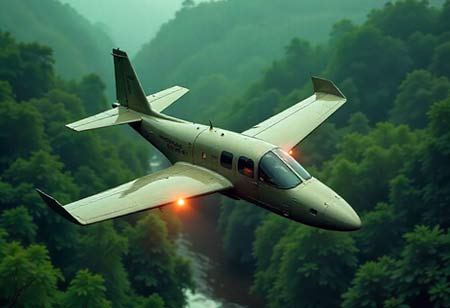Interception drones represent a transformative shift in air defense, offering a more efficient, adaptable, and cost-effective solution with the potential to significantly enhance national and international security.
FREMONT, CA: The future of aerial defense is unfolding. Among the most transformative technologies in this field are interception drones, designed to detect, track, and neutralize airborne threats. As countries around the globe face increasing security challenges, the use of interception drones is reshaping modern aerial defense strategies, offering precision, flexibility, and efficiency unlike any traditional systems used before.
A Paradigm Shift in Defense Systems
Interception drones represent a significant leap from conventional air defense mechanisms, such as missile systems or manned aircraft. Unlike traditional methods, which are often expensive, require extensive maintenance, and necessitate highly trained operators, drones offer a more cost-effective and agile solution. Their ability to autonomously engage threats without putting human pilots at risk makes them indispensable in scenarios where speed and safety are critical.
How Interception Drones Operate
The operation of interception drones hinges on cutting-edge technologies like artificial intelligence (AI), advanced radar systems, and precision targeting mechanisms. Equipped with sensors and communication systems, these drones can identify incoming threats such as enemy aircraft, cruise missiles, or even unmanned aerial vehicles (UAVs). Upon detection, they can strategically maneuver to intercept and neutralize threats through collision, electronic disruption, or deploying explosives.
The Role of Advanced Technologies in Interception Drones
Interception drones leverage cutting-edge technologies to enhance their effectiveness in modern air defense. AI and machine learning play a critical role, enabling these drones to make rapid, autonomous decisions and continuously refine their interception strategies based on evolving threats. Advanced radar systems provide early detection and real-time tracking of airborne targets, ensuring swift and precise responses. Additionally, precision weaponry, ranging from kinetic effectors to electronic warfare modules, equips these drones with the capability to neutralize threats efficiently.
Advantages Over Traditional Air Defense Systems
Compared to conventional air defense solutions, interception drones offer several key advantages. Their cost-effectiveness makes them a viable alternative to expensive missile defense systems or manned fighter jets, reducing production and operational expenses. Their scalability allows for deployment in swarms, effectively covering extensive airspace. As unmanned systems, they also eliminate risks to human pilots in combat scenarios. Furthermore, their AI-driven adaptability ensures real-time responses to emerging threats, making them highly versatile in operational environments.
Applications Beyond Warfare
While interception drones are primarily designed for military applications, their potential extends far beyond. They can be employed in counterterrorism operations, safeguard critical infrastructure, and control airspace during major public events. Their capabilities can also benefit disaster response, such as intercepting drones carrying hazardous materials or aiding in search and rescue missions.
The future of interception drones is promising, with ongoing advancements in AI, materials science, and energy storage poised to overcome current challenges. Collaborative efforts between global defense organizations and private tech firms are accelerating development, ensuring interception drones evolve to meet the demands of modern aerial defense.
In the years to come, interception drones are set to become a cornerstone of air defense systems, complementing and potentially replacing traditional methods. Their ability to enhance preparedness and response times while minimizing risks and costs will propel them into the vanguard of national and international security strategies.









